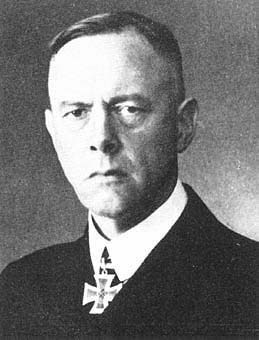His Majesty's Ships - H.M.S. King George V
The War Illustrated, Volume 10, No. 244, Page 426, October 25, 1946.
Known familiarly in the Navy as “K. G. Five”, H.M.S. King George V has a displacement of 35,000 tons and a main armament of ten 14-in. guns. She was commissioned on October 1, 1940. In May 1941, as flagship of Admiral Sir John Tovey, she joined the Rodney in engaging the German battleship Bismarck, a considerably bigger ship. The Bismarck was reduced to a blazing wreck, and as she would not surrender a cruiser was directed to finish her off with torpedoes.
During the thick fog on May 1, 1942, the King George V collided with the destroyer Punjabi, which sank, exploding her depth charges against the battleship's plating. It took some weeks to repair the damage. A year later the King George V formed part of the covering force at the landings in Sicily and at Salerno. At the end of 1943 she returned to the Home Fleet. On October 28, 1944, she sailed for the East. On arrival at Colombo, on December 13, 1944, she hoisted the flag of Vice-Admiral Sir Bernard Rawlings, Second-in-Command of the Pacific Fleet, under whom she supported the naval air attacks on Palembang, in Sumatra, the following month. During the invasion of Okinawa she took part in attacks on the Saki Islands.
In June and July 1945, she was flagship of the British portion of the Allied Fleet operating against Tokyo and other places in the main islands of Japan. Air attacks were also undertaken under cover of the Anglo-American Fleet, the last being made on Tokyo on August 13. A contingent of 300 drawn from the ship's company took part in the landing operations which followed. The King George V returned to this country on March 1, 1946, and is now flagship of Admiral Sir Neville Syfret in the Home Fleet.
Previous and next article from His Majesty's Ships
His Majesty's Ships - H.M.S. Onslow
A destroyer if 1,540 tons, completed on the Clyde in October 1941, H.M.S. Onslow in December 1942, commanded by Captain R. St. V. Sherbrooke, formed part of the escort of a convoy bound for N. Russia
His Majesty's Ships - H.M.S. Aurora
Motto: “After Darkness, Light.” Launched in 1936, H.M.S. Aurora, a cruiser of 5,270 tons, steamed 201,688 miles and fired 9,163 rounds of 6-in. shell from her main armament during the War. Few
Index
Previous article
No. 117 Squadron
Motto: "It Shall be Done" Nothing is known of the squadron's early activities in the war, but in June 1943 they were at Castel Benito in Tripolitania operating with Dakota transport aircraft throug
Next article
Judgement at Nuremberg
"MANACLED and heavily guarded to prevent any attempts at suicide, the 11 Nazi war criminals sentenced to death by the International Military Tribunal were today (October 2, 1946) moved to the condemne




